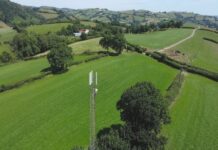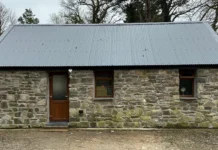West Wales polecat survey – volunteers needed!
The polecat was once common and widespread in Britain but by 1915 its range was dramatically reduced to a main stronghold in Wales. A reduction in trapping pressure since then has allowed the polecat population to expand slowly and it is now widely re-established in Wales and central England, with some small populations in northern England and Scotland.
In a UK-wide survey of polecat distribution in 2006, England generated approximately three times as many records as Wales. Notably, many 10-km squares in Wales, the polecat’s historical stronghold, generated no records at all! Either polecats have become scarce in Wales or polecats remain common in Wales but records are sparse because the density of humans, roads and traffic are lower than in central England (records were from road kill sightings).
By taking part in the west Wales polecat survey you will be helping to clarify the distribution of the polecat in Wales, the historical stronghold of this elusive carnivore. This will enable monitoring of future changes. Carmarthenshire has been identified as a county from which records are especially important.
Polecats are related to stoats, weasels and ferrets – the mustelid family. They are found in a variety of habitats, including farmland, woodland, marsh, riverbanks, hedge banks, sea cliff and sand dunes. They are solitary and have large home ranges depending on the season and food availability, often building dens in caveties under tree roots or in stream banks. Polecats eat rabbits, small rodents, eggs, birds, amphibians and carrion.
If you see a polecat (dead or alive!):
-
If you are in a vehicle, first park safely and watch out for other road traffic.
-
Please take photos of the animal if possible. If the animal is dead, take photos showing complete back view, underside and head.
-
Record the date, the six-figure grid reference (if possible) or postcode and nearest town/village.
-
Send these details to jennymacpherson@vwt.org.uk
-
Records can be accepted without accompanying photos, although these are less valuable because they cannot be confirmed as true polecats or hybrids.
The MISE project is part funded by the European Regional Development Fund (ERDF) through the Ireland Wales Programme (INTERREG 4A). The project aims to monitor mammal species of conservation interest, with the help of novel genetic techniques, and work with volunteers to raise awareness, and engage the public in mammal survey and conservation work.
Carmarthenshire Biodiversity November/December 2011 eNewsletter
Help keep news FREE for our readers
Supporting your local community newspaper/online news outlet is crucial now more than ever. If you believe in independent journalism, then consider making a valuable contribution by making a one-time or monthly donation. We operate in rural areas where providing unbiased news can be challenging. Read More About Supporting The West Wales Chronicle






















